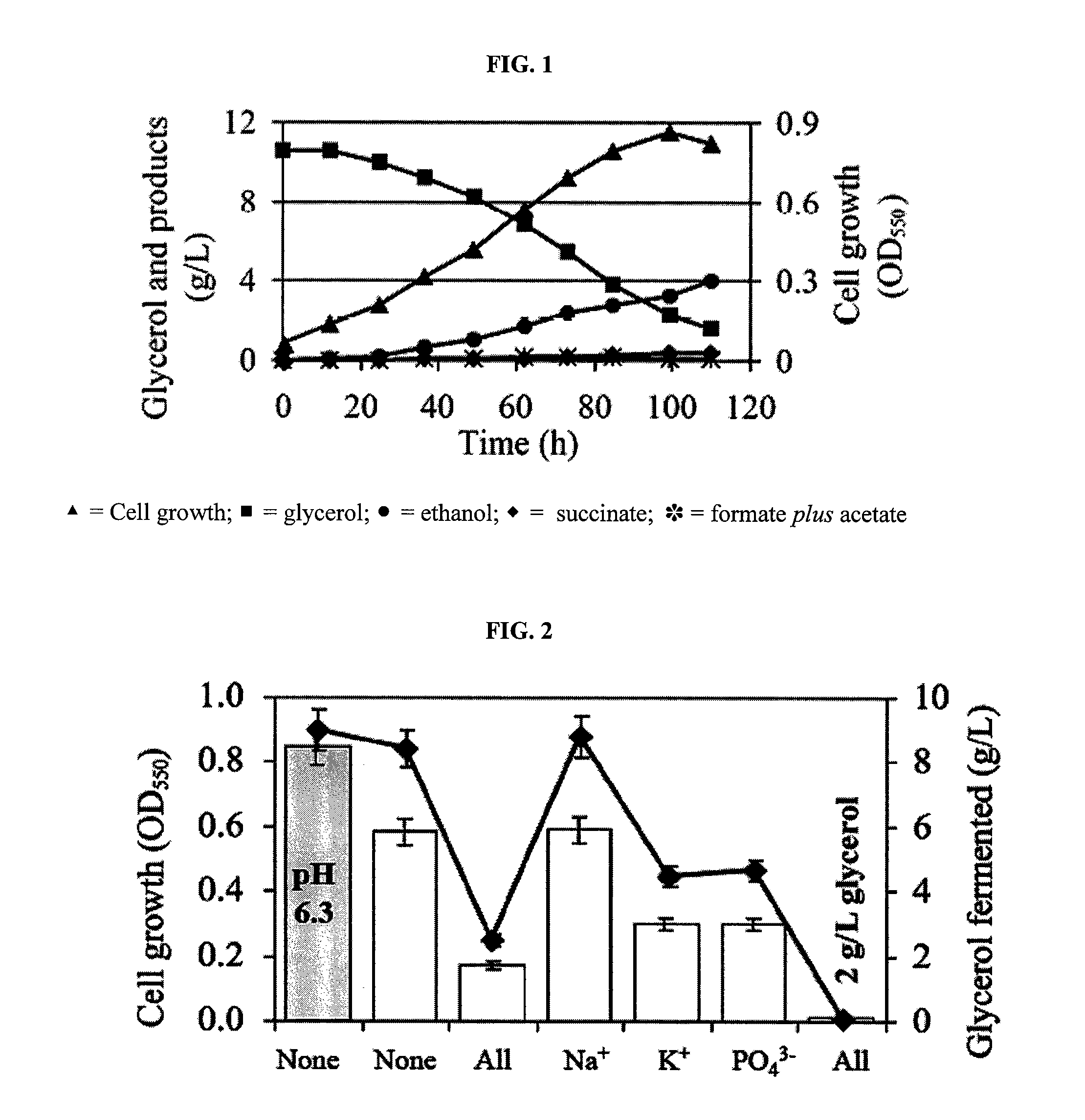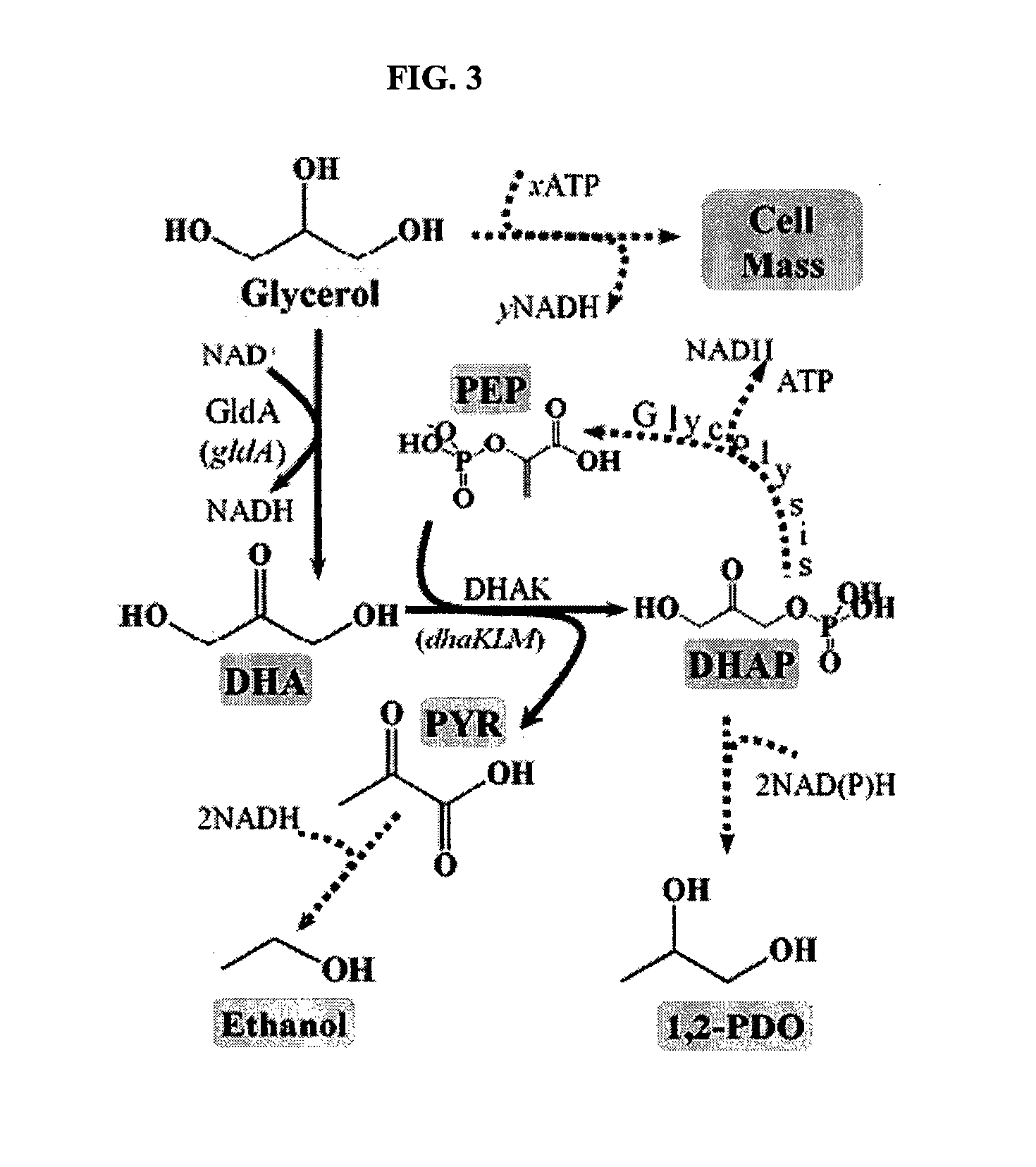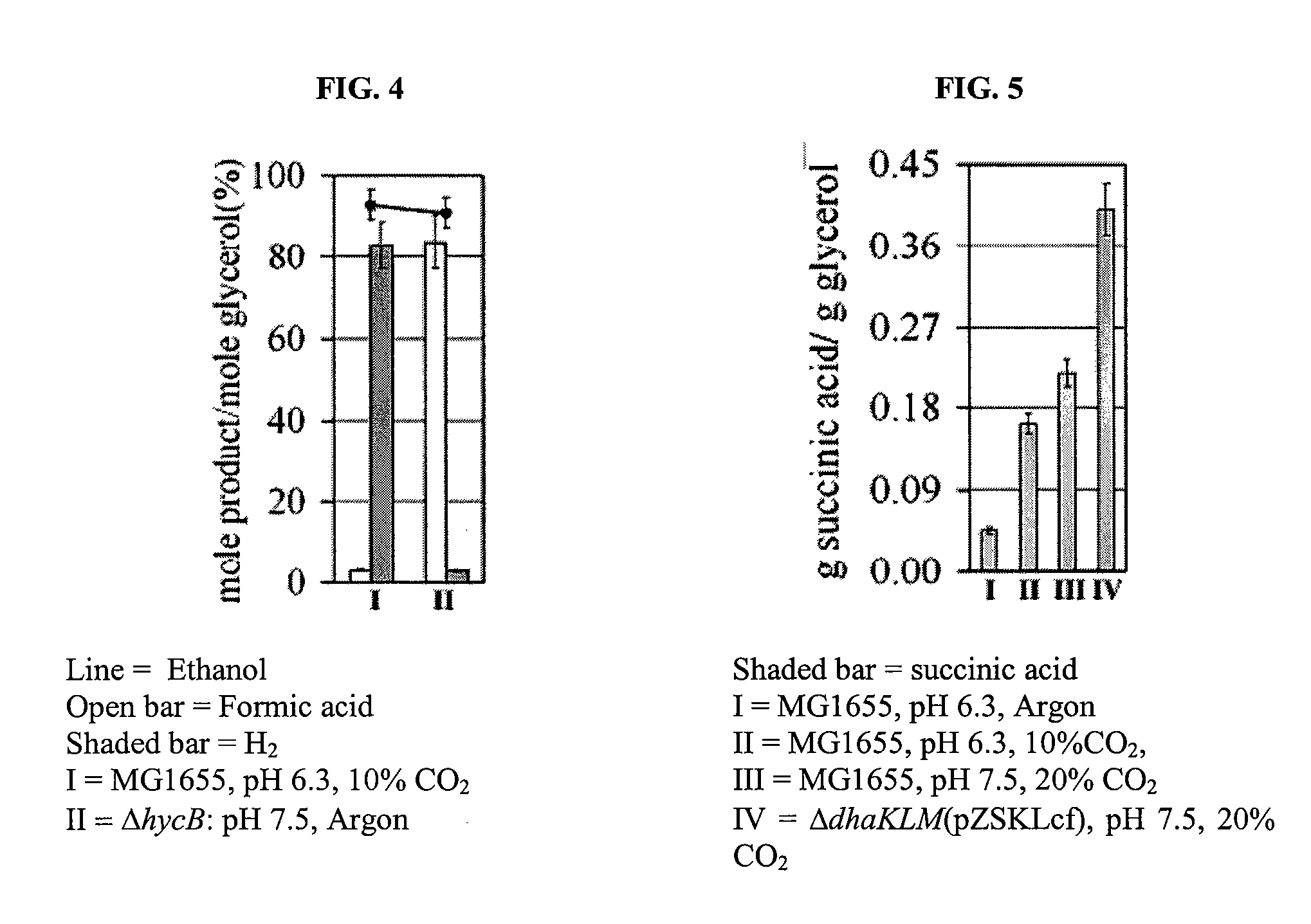Anaerobic Fermentation of Glycerol
a technology of anaerobic fermentation and glycerol, which is applied in the field of anaerobic fermentation of glycerol, can solve the problems of limited ability to ferment glycerol, limited physiological knowledge and genetic tools, and hampered the potential use of glycerol as carbon source in fermentation processes, so as to improve glycerol fermentation, maintain redox balance, and reduce the negative effects of ph above 7.0
- Summary
- Abstract
- Description
- Claims
- Application Information
AI Technical Summary
Benefits of technology
Problems solved by technology
Method used
Image
Examples
example 1
Materials and Methods
[0041]Throughout the application, gene disruption mutants are referred to using the following nomenclature: Δgene1 for a single disruption of gene1 or Δgene1Δgene2 for a double disruption.
[0042]Wild-type E. coli K12 strains MC4100 (ATCC 35695), W3110 (ATCC 27325), wild-type E. coli B (ATCC 11303), and enteric bacteria Enterobacter cloacae subsp. cloacae NCDC 279-56 (ATCC 13047), Buttiauxella agrestis (ATCC 33994), Serratia plymuthica (ATCC 15928), and Leminorella richardii (ATCC 33998) were obtained from the AMERICAN TYPE CULTURE COLLECTIONS. Single mutant recombinant strains Δpta, ΔadhE, ΔcydA, ΔcyoB, ΔfrdA, ΔfixA, ΔglpA, ΔglpD, ΔmgsA, ΔyeaE, ΔyghZ, ΔyafB, ΔfucO, ΔatpF, ΔatpD, ΔpykF, and ΔhycB were obtained from the E. coli Genome Project (University of Wisconsin-Madison, www.genome.wisc.edu) or constructed using the method described by Datsenko and Wanner (2000). K12 strain MG1655 (F— lambda-ilvG-rfb-50 rph-1) was used as wild-type for creating gene disruption...
example 2
Glycerol Fermentation and Effect of Medium Composition
[0055]Although it is believed that glycerol metabolism in E. coli is restricted to respiratory conditions, we have discovered that this organism can metabolize glycerol in the absence of electron acceptors. FIG. 1 shows a typical fermentation profile for wild-type strain MG1655 in a medium supplemented with 2 g / L tryptone (additional details were provided in provisional applications 60 / 788,512 and 60 / 867,581 and Gonzalez et al., 2007). Approximately 1-2 g / L of glycerol were left unfermented in the medium of stationary phase cultures. Ethanol, 1,2-propanediol (1,2-PDO), and succinic, acetic, and formic acids were identified as fermentation products using different NMR techniques.
[0056]We next sought to identify the effect of various parameters on glycerol fermentation. Potassium, phosphate, sodium, glycerol, HA, pH and CO2 were titrated for cell growth according to typical methods.
[0057]The typical media used in previous studies o...
example 3
Pathways and Mechanisms of Glycerol Fermentation
[0059]The anaerobic fermentation of glycerol in enteric bacteria has long been considered a privilege of species that have an active 1,3-PDO pathway. We have demonstrated, however, that E. coli can fermentatively metabolize glycerol in a 1,3-PDO-independent manner, so long as a functioning 1,2-PDO pathway and glyDH-II-DHAK pathways were present.
[0060]Based on our findings, described in more detail in Dharmadi, et al. (2006), Gonzalez et al., 2007, and provisional applications 60 / 867,581 and 60 / 788,512 (each incorporated by reference), we propose a new paradigm for glycerol fermentation in enteric bacteria in which: (i) the 1,2-PDO pathway provides a means to consume reducing equivalents generated during synthesis of cell mass, thus enabling redox balanced conditions and (ii) the synthesis of ethanol, through a redox-balanced pathway, fulfills energy requirements by generating ATP via substrate-level phosphorylation (FIG. 3). The activi...
PUM
| Property | Measurement | Unit |
|---|---|---|
| pH | aaaaa | aaaaa |
| pH | aaaaa | aaaaa |
| pH | aaaaa | aaaaa |
Abstract
Description
Claims
Application Information
 Login to View More
Login to View More - R&D
- Intellectual Property
- Life Sciences
- Materials
- Tech Scout
- Unparalleled Data Quality
- Higher Quality Content
- 60% Fewer Hallucinations
Browse by: Latest US Patents, China's latest patents, Technical Efficacy Thesaurus, Application Domain, Technology Topic, Popular Technical Reports.
© 2025 PatSnap. All rights reserved.Legal|Privacy policy|Modern Slavery Act Transparency Statement|Sitemap|About US| Contact US: help@patsnap.com



